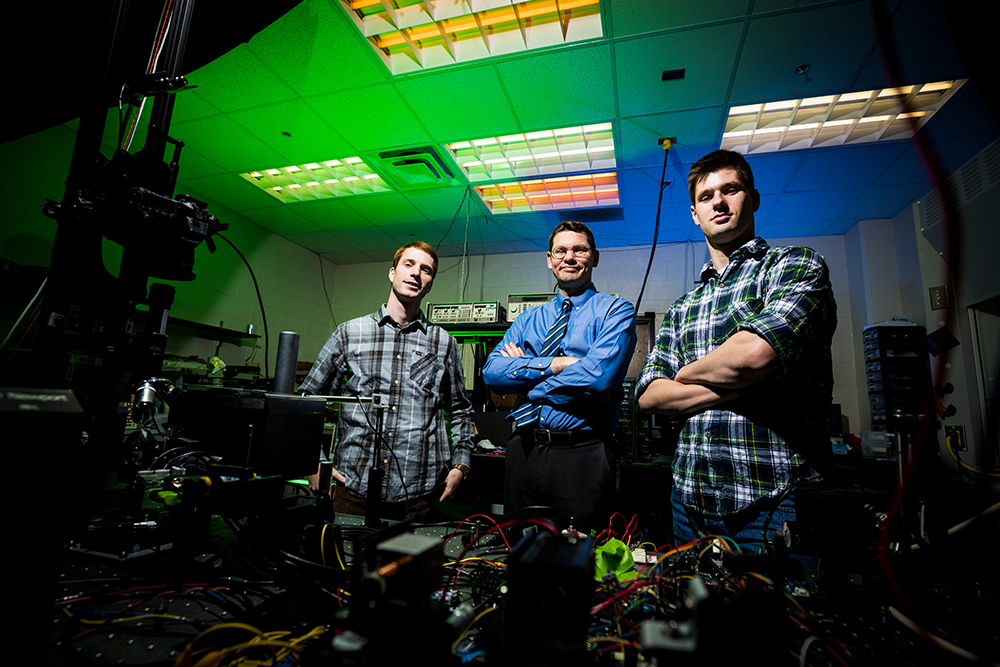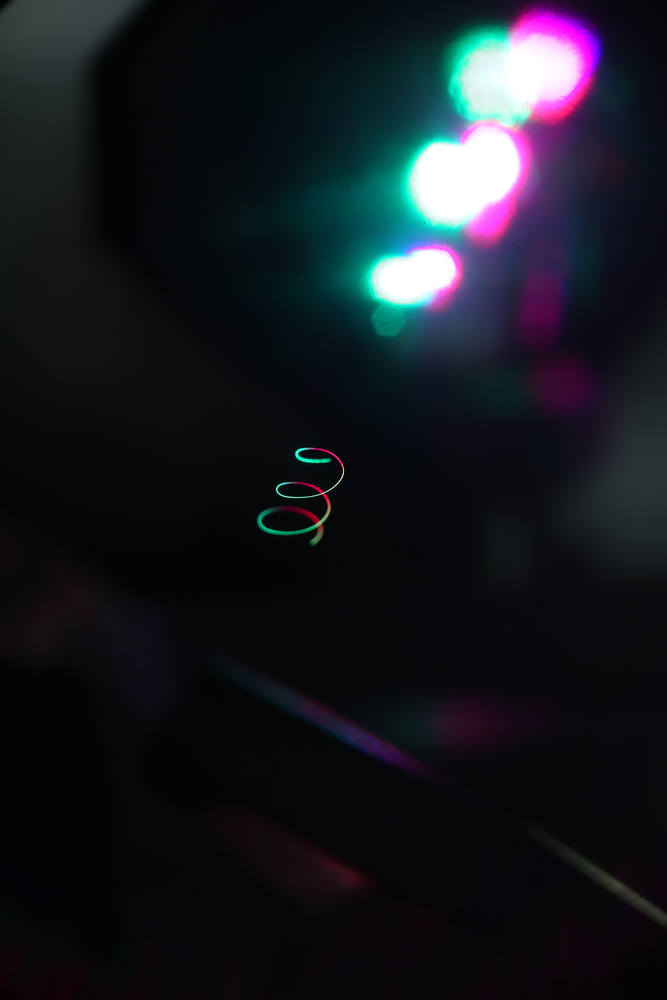Debunking the Princess Leia Lie
-
-
slice.mit.edu
- 4
Filed Under
Like many alumni, Daniel Smalley ’05, MEng ’06, SM ’08, PhD ’13 is a Star Wars enthusiast. But when he watches Star Wars Episode IV: A New Hope, Smalley is academically miffed.
There’s a violation of physics here.
In the movie, R2-D2 delivers a seemingly holographic yet also 3-D message from Princess Leia pleading for Obi-Wan Kenobi’s help. “There’s a violation of physics here,” Smalley says.
“The way we interpret that movie scene is, R2-D2 is creating an image in space that can be seen from every angle, just like a real physical object,” he explains. “A real physical object shoots [light] photons in all directions.” But the Princess Leia message is not real—she’s a display created by light, which travels in a straight line. In reality, the princess would only be seen by the film’s other characters if they stared at her from the exact same direction—down the barrel of R2-D2’s projector.

Spurred on by this and further pop culture slights to physics, like that of Iron Man’s gauntlet, which appears in both 3-D and holographic form (“It almost ruined the movie for me,” he remembers), Smalley formed the Electro-Holography Research Group as a new professor at Brigham Young University after graduating from MIT.
Among the projects he leads is one on volumetric images—coined Optical Trap Displays or the Princess Leia Project for fun—to bring 3-D displays popularized in science fiction to life. He sees this technology being used in everything from air traffic control to aiding doctors in precise medical procedures.

Here’s how it works: While light travels in a straight line, it can bend if it has something from which to bounce off. Enter the light trap display, a concept developed by Smalley and his team, in which a single particle is trapped within a small hole, called a light intensity hole or a photophoretic trap. Such a trap is created by a focused laser beam passing through an aberrated lens.
If the particle tries to escape the hole, its increased closeness to the outer walls of the hole causes it to heat up, which forces it back into the trap. This allows the particle to remain within the trap even as the trap is moved around to form a 3-D image in air. While entrapped, the particle is illuminated with visible light—red, green, and blue combinations to make various colors. Visible light scattered off the trapped particle makes it possible for viewers to see the 3-D image from wherever they are standing in space.

While the produced images are still quite small—only 1 cm per side when videotaped—Smalley anticipates creating much larger, high-resolution displays in the near future. And he foresees volumetric imagery alleviating some of the stresses in a number of industries, including satellite tracking and health care.
Currently, satellite movement is monitored by humans via 2-D displays and algorithms. But as the number of satellites is projected to rise threefold by 2026, Smalley believes volumetric images could aid in the visualization of their orbits and prevent collisions.
In health care, volumetric imagery could aid doctors in catheterization. As the doctor is weaving a catheter through a patient’s veins, a 3-D image of that vasculature could hover over the patient, increasing the doctor’s accuracy during the procedure.
I found that everybody at MIT was just overwhelmed with their personal quest. That kind of passion was really compelling.
While the latter application might require more work in the lab, Smalley is up for the challenge, drawing upon his time at MIT. “I found that everybody at MIT was just overwhelmed with their personal quest,” he said. “That kind of passion was really compelling.”








Comments
Amanda Musselwhite
Mon, 01/14/2019 6:07pm
(No subject)
1. The only "Princess Leia lie" is that it's possible to get real human hair to stay in those buns (I tried for years as a child with long hair).
2. This article references "the first episode of the Star Wars series". I assert that no matter the order the movies were filmed, A New Hope remains the fourth episode of the Star Wars series (hence Episode IV on the scrolling intro).
I'm quite disappointed in my alma mater.
Kate Repantis
Tue, 01/15/2019 8:49am
(No subject)
Very good point - we've made that correction.
Ronke Olabisi
Thu, 01/24/2019 11:49am
(No subject)
Dreadlocks can successfully be wrapped into Princess Leia buns (have dreadlocks, did the buns).
Lee Allen
Tue, 01/29/2019 11:15pm
Lies Throughout History
Yes what a shameless lie. Just like the others before it.
There's the Captain Kirk / Star Trek Lie: Those communicators can't work that way, the wires would have to stretch out into space...
The iPad Lie: Hey it is too thin, the vacuum tubes won't fit in there.
The Automobile Lie: Where's the darned horse?
Of course these are lies because at any point in time. we think we know all there is to know about the progress and future of technology - right? Or to quote Ken Olsen (President, Chairman, and Founder of Digital Equipment Corporation):
There is no reason anyone would want a computer in their home.
– Ken Olsen, 1977